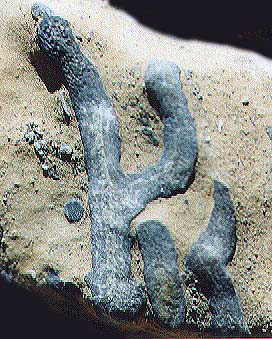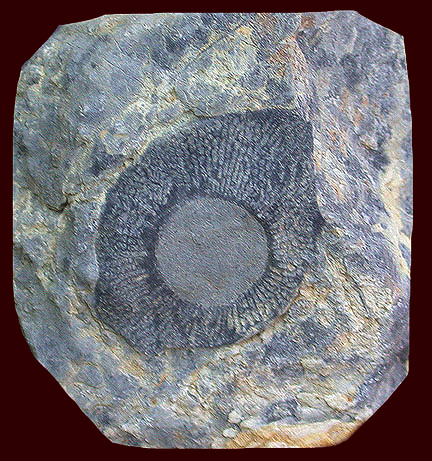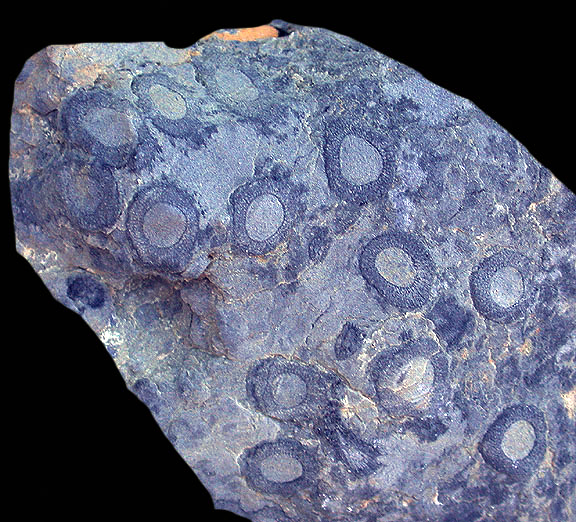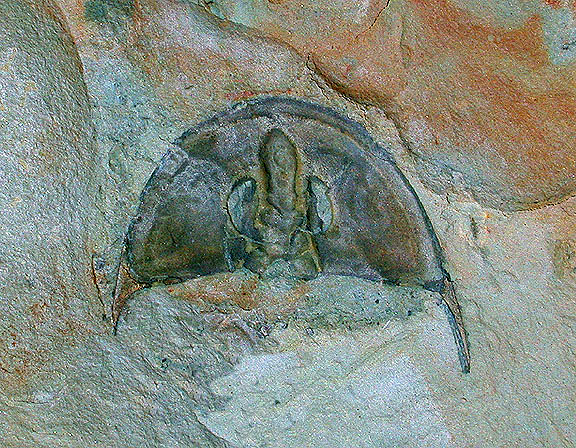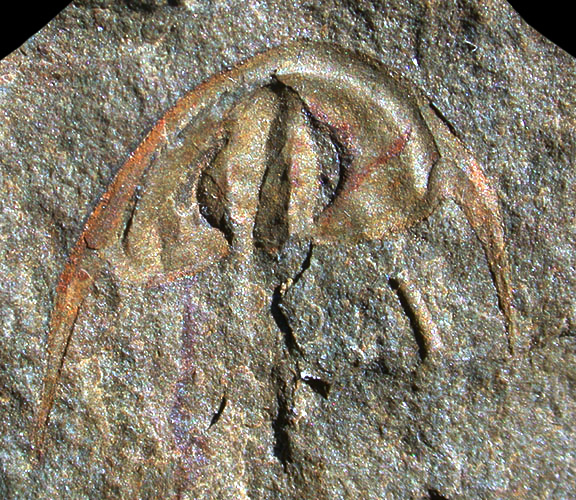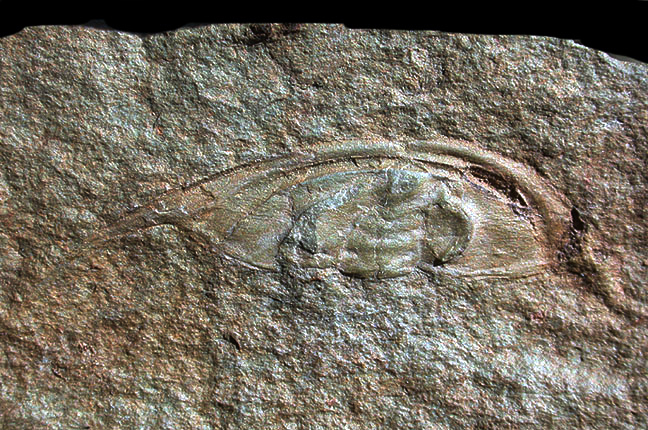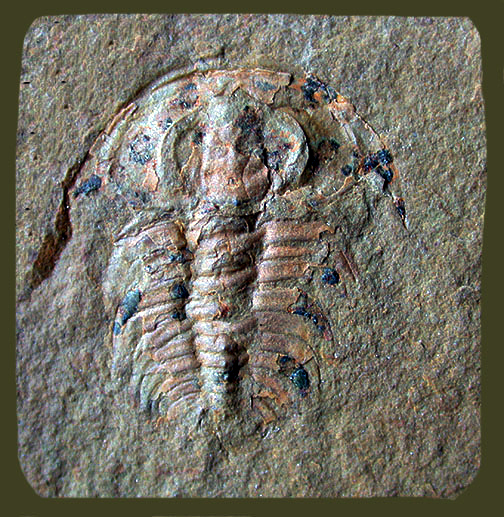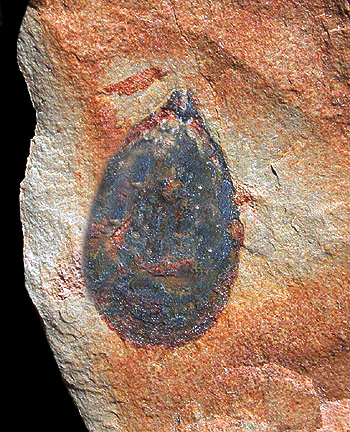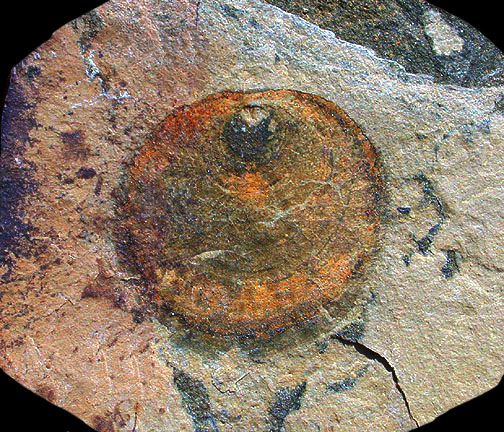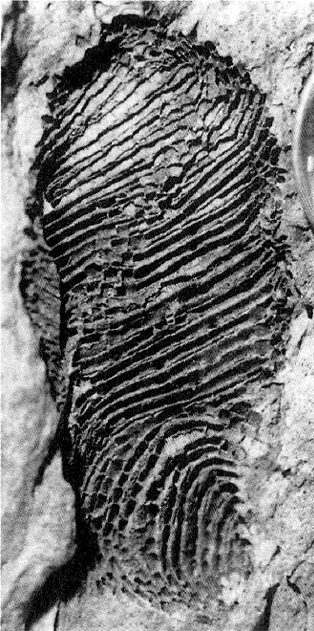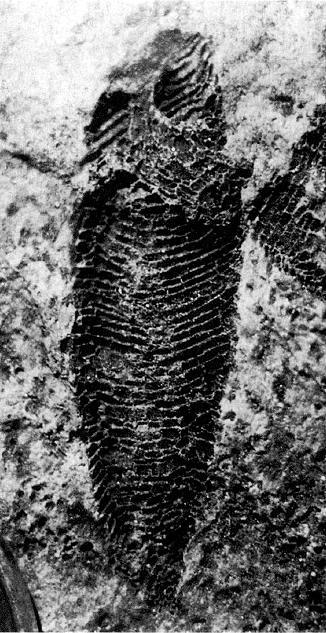| Here's the best trilobite I found in the
Lower Cambrian Montenegro Member of the Campito Formation during
a visit to Esmeralda County, Nevada. Must have been beginner's
luck. I wasn't at the main trilobite quarry more than five minutes,
splitting chunks of shale others had neglected to split thoroughly,
when a nondescript piece of shale literally cleaved in my hands
to reveal a mostly complete specimen of Fallotaspis cf. bondoni.
This is just about the oldest articulated trilobite one can be
expected to find in the geologic record. A species of Eofallotaspis
occurs in a rather narrow 30 centimeter bed directly below where
I found my Fallotaspis, but they're all fragmentary, disarticulated
remains of head shields--except, that is, for a few very rare,
poorly preserved complete specimens; and quite rare, stray occurrences
of trilobites have been spotted a few tens of feet below the
Eofallotaspis bed in the Andrews Mountain Member of the Campito
Formation. The Eofallotaspis bed exposed throughout Esmeralda
County, Nevada, marks the base of the proposed Montezuman Stage
of the Early Cambrian Waucoban Series, which is that point in
the geologic record where the first common trilobites begin to
appear. Estimated geologic age of the specimen is approximately
521 million years old. |
